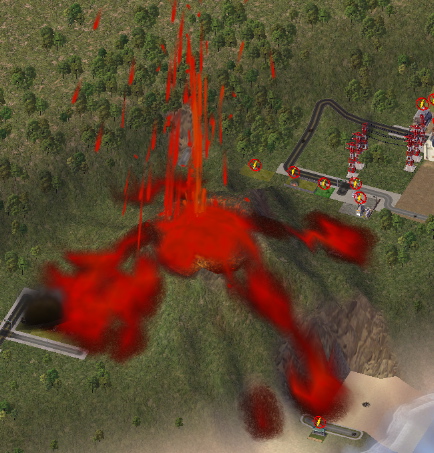"It's like dodgeball," Willits says. "It would be no fun if the ball actually killed you."
Skate series producer Chris "Cuz" Perry, echoing Willits, describes the skater mentality that EA Black Box attempted to recreate: "You have the obsession with proving to yourself that you can do what you wanted to do. It's getting back on the horse. It's a strange addiction."
The Skate games, which mainly challenge you to perform physical stunts around the city, revel in pain. Wiping out is an inconvenience, sure; it's dissatisfying to wait for your position to be reset by the game. But pain is deliberately framed as an integral process. The Thrasher Hall of Meat challenges in Skate 2 invite and encourage you to hurt yourself by purposely bailing in bad places, even performing body tricks on the way down -- and score you by the sum of bodily harm you endure.
The Hall of Meat is based on an actual Thrasher Magazine photo column to which skaters would submit morbid pictures of their own broken bones and bloody limbs, evidence of failed stunts, for publication. Viewing these photographs constitutes something of a macabre fascination, just like watching your game avatar tumble to the ground while its bones audibly crack on pieces of concrete and metal. But it isn't simply perverse; being wounded is a rite of passage. Without it, no one would get anywhere. Self-inflicted harm is a foundation of one's participation and advancement in the sport.

"Every skateboard video has a slam section which shows the effort that went into getting that one moment of art. There was a lot of work and a lot of pain that went into capturing that trick," Cuz says. "It was perfectly aligned. We're a videogame."
A game, then, is a proving ground for the body. The lasting moments are the ones where your reflexes keep you afloat in the world. It could mean grinding a 20-foot rail, rocket jumping over the heads of opponents, or hopping on turtle shells. Everything else is unsightly: a broken leg, a lowered ranking, a continue prompt. But it's the possibility of failure that underpins gameplay.
According to Cuz, the rationale behind making an entire sub-game of bailing -- with its own value system, built on self-directed hurt -- was to "give the player total control of his body at all times," a skateboarding and sports ideal. He likens players who hone their bailing skills in Hall of Meat to professional skater Danny Way, who also appears in the game: "He's bionic. He stays awake for his own knee surgery. He doesn't get put under anymore, because he wants to see what they're doing to his knee. In the last X Games MegaRamp contest, one ankle was broken. So he switched, broke his shoulder, and still won. That level to get back up -- the year before, he ended up leaving in a wheelchair after he got second place. It's part and parcel of the culture."
At a certain level, skateboarding becomes a conscious exploration -- and expansion -- of the body's limits. The body is real and able so long as you can still affect it. That's what games from Persona 3 to Karoshi to Quake to Skate suggest about your avatar when they give you the power to hurt it.
If You Build It...
If dying is one way we can fundamentally connect with our characters, what about our self-destructive tendencies in games that look beyond the individual?
Take constructive games like The Sims and SimCity, where you are tasked with building and nurturing systems that interact, rather than maneuvering and protecting a single body. SimCity offers mayors the option to set fire to cities they have spent weeks or months building, start earthquakes, summon tornadoes, and more. And players have been trying to kill their Sims for years -- trapping them in burning houses, or swimming pools with no ladder, or a world without food. The pleasure taken in killing one's own digital projections seems little more than sadistic.

Maybe committing suicide in a game isn't really that complicated. It is, of course, an act experienced vicariously through the machine, an outlet for human darkness.
"Sometimes players want to explore the feeling of acting wrongly in a safe and harmless way -- through a videogame," says Charles London, creative director at EA. "We recognize this need, and understand that it provides many different opportunities for players to be fascinated, ashamed, repulsed, or amused by their own behavior. All of these are powerful, dramatic emotions to feel from a game."
"Often, players will trigger disasters on their own cities when that city has reached some kind of beneficial equilibrium," he continues. "That's often the moment when a player wants a new challenge." So, whether compulsory or optional, horrifying or funny, the thing about our impulse to commit suicide or self-destruct is that it means we are -- paradoxically -- deeply invested in our extra lives. Games grant us the privilege to live again. But they make dying mandatory, a beginning rather than an end.
"We've got this crazy vehicle that we're on, and that our body separates from, and comes back together with. I think that's liberating," Cuz says. Sounds like gaming, too.
Ryan Kuo is an editor at Kill Screen Magazine and a freelance writer and artist based in Brooklyn, NY. Find him on Xbox Live and Twitter as twerkface.


